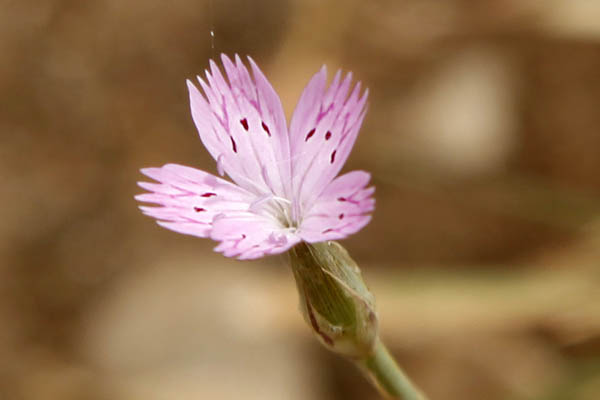Hebrew: צפורן חד-שנתי, Arabic: القرنفل ثلاثي النقط
| Scientific name: | Dianthus tripunctatus Sibth. & Sm.; Sm. | |
| Common name: | Three-spotted Pink | |
| Hebrew name: | צפורן חד-שנתי | |
| Arabic name: | القرنفل ثلاثي النقط | |
| Family: | Caryophyllaceae, ציפורניים |

|
| Life form: | Annual | |
| Stems: | 15-40cm, divaricately-branched, non-flowering stems absent | |
| Leaves: | Opposite, entire, smooth margin; basal leaves oblong-spathulate, obtuse; cauline (stem) leaves linear, acuminate | |
| Inflorescence: | Solitary flowers | |
| Flowers: | epicalyx (=a group of bracts simulating a calyx) 3/4 as long as calyx; calyx verruculose; 5 pink petals, dentate, bearded, with 3 red spots at base | |
| Fruits / pods: | Capsule, many seeded | |
| Flowering Period: | March, April, June, July | |
| Habitat: | Batha, Phrygana | |
| Distribution: | Mediterranean Woodlands and Shrublands | |
| Chorotype: | Mediterranean | |
| Summer shedding: | Ephemeral |
|
Derivation of the botanical name: Dianthus, probably alteration of Greek diosanthos, carnation: dios, "god", anthos, "flower", and was cited by the Greek botanist Theophrastus. tripunctatus marked with three dots. The Hebrew name:ציפורן, tsiporen, Aramaic: טופרא, Topra, nail, from the German name "Nelke" (from the Middle High German negelkin "Nägelchen"), based on the comparison of its aromatic, nail-shaped flowers with the shape-like buds of the cloves.
|